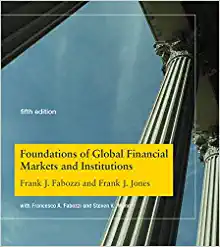


Please help me with the following questions:
1. Suppose the model of interest is Y,= Pot BIXli+ ByX2 + uj, where E(u[X)=0 and E(u'[X)=02 and X1 and X2 are uncorrelated in your sample. Will the bivariate regression of Y on X, have the same coefficient estimate and standard error for , as the multivariate regression of Y on Xi and X2? [6 points]Table IV from Lemieux, MacLeod, and Parent (Quarterly Journal of Economics, 2009; see the following page) shows results from a regression of log wages on a dummy for whether a job has pay linked to performance (e.g. salespeople paid on commission) and other variables. The data are panel data on workers. In addition to the reported coefficients, the regressions include industry, occupation, and year dummies; county unemployment; and marital status, race dummies, and union status. Standard errors are in parentheses. The model also includes quadratic functions of experience (number of years in the workforce) and tenure (number of years at this specific job). The row labeled "Experience x performance- pay" is the effect of experience at 20 years interacted with performance pay. Similarly, the row labeled "Tenure x performance pay" is the effect of tenure (evaluated at ten years) interacted with performance pay. 1. Based on column (3), is the return to education higher at performance pay jobs or non- performance pay jobs? What is the difference and is it statistically significant? [6 points]TABLE IV SKILLS-RELATED WAGE DIFFERENTIALS AND PERFORMANCE-PAY (PP) JOBS Sample PP jobs Non-PP jobs All jobs OLS OLS OLS FE OLS FE Estimation method (1) (2) (3) (4) (5) (6) Performance-pay job dummy -0.4526 -0.2061 -0.2406 0.1414 (0.1019) (0.0723) (0.1251) (0.0998) Years of education 0.0929 0.0665 0.0637 0.0167 0.0584 0.0040 (0.0071) (0.0039) (0.0040) (0.0091) (0.0047) (0.0096) Education x performance-pay job 0.0365 0.0169 0.0217 -0.0079 (0.007 1) (0.0048) (0.0092) (0.0071) Education x 1990-1993 0.0161 0.0222 (0.0085) (0.0056) Education x performance-pay job 0.0190 0.0280 x 1990-1993 (0.0137) (0.0089) Potential experience (effect at 20 0.4259 0.2882 0.3010 0.4545 0.3002 0.4231 years) (0.0535) (0.0288) (0.0294) (0.1258) (0.0294) (0.1256) Experience x performance-pay job 0.1162 0.0149 0.1018 -0.0278 (0.0584) (0.0501) (0.0581) (0.0509) Tenure (effect at ten years) 0.1670 0.2197 0.2262 0.1158 0.2271 0.1191 (0.0268) (0.0154) (0.0154) (0.0129) (0.0154) (0.0129) Tenure x performance-pay job -0.0666 0.0278 -0.0677 0.0196 (0.0301) (0.0237) (0.0303) (0.0239) Number of observations 9.680 16,466 26,146 26,146 26,146 26,146












